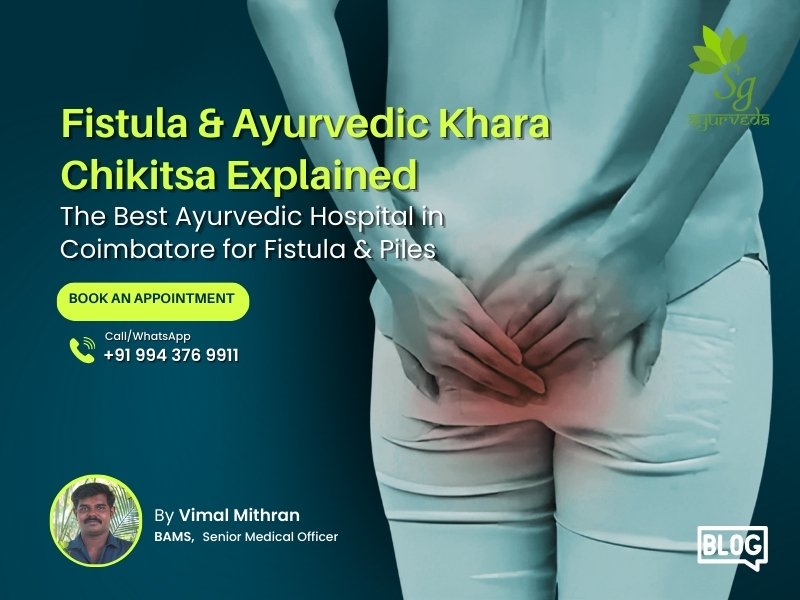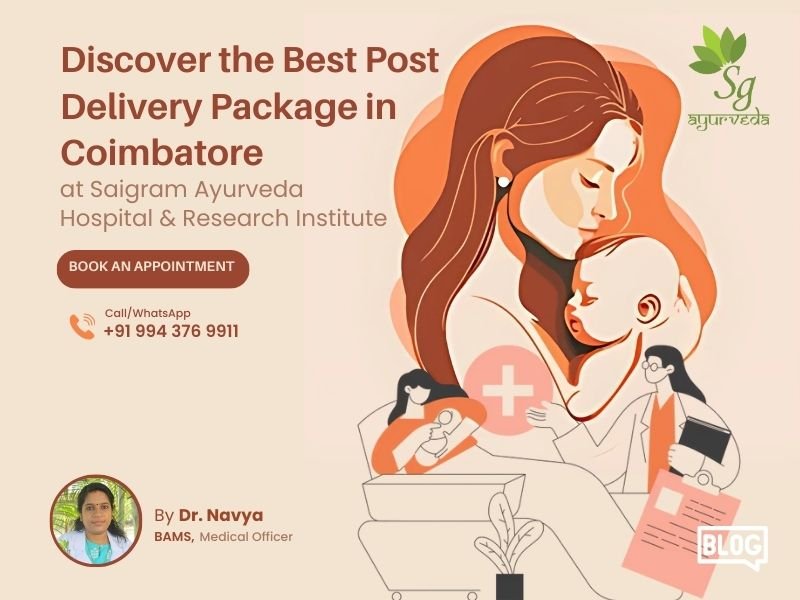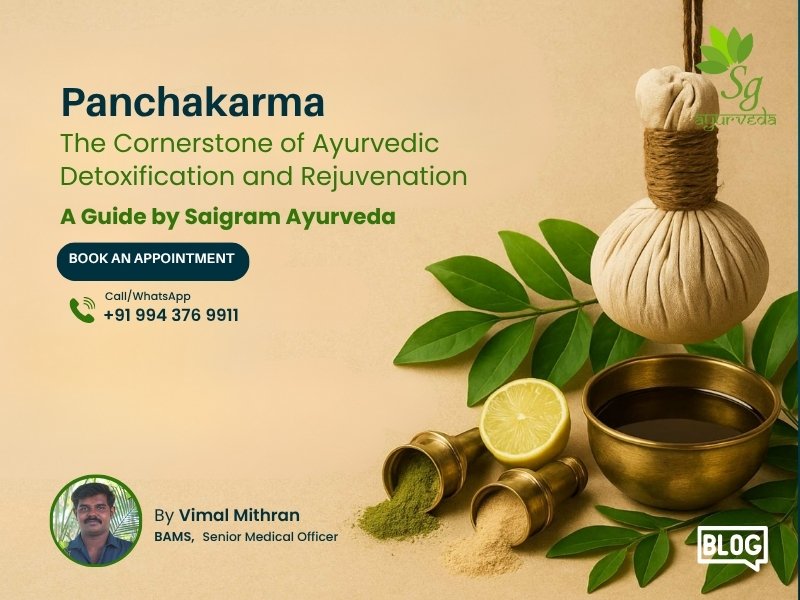In the vast and profound science of Ayurveda, few treatments are as renowned or as deeply transformative as Panchakarma. At Saigram Ayurveda Hospital and Research Institute, widely recognized as the best Ayurveda hospital in Coimbatore, we believe in empowering our patients with knowledge. This blog aims to demystify Panchakarma, exploring its true essence, procedures, and immense importance for holistic health, moving beyond common misconceptions to reveal its true therapeutic power.
What is Panchakarma? Beyond the Misconceptions
The term 'Panchakarma' is derived from two Sanskrit words: 'Pancha,' meaning five, and 'Karma,' meaning actions or procedures. It is a cornerstone of Ayurvedic medicine, representing a sophisticated and systematic approach to detoxifying the body and rejuvenating the mind.
Contrary to popular belief, Panchakarma is not a single treatment but a series of five primary therapeutic procedures designed to eliminate deep-seated toxins (known as Ama) and restore the functional balance of the body's fundamental bio-energies, the Doshas: Vata, Pitta, and Kapha.
The Five Core Procedures of Panchakarma
As the name suggests, Panchakarma consists of five main cleansing actions. Each procedure is tailored to target specific Doshic imbalances and areas of the body. After validation, the correct terminologies and their descriptions are:
1. Vamana (Therapeutic Emesis): This is a medicated emesis therapy designed to eliminate excess Kapha dosha and toxins from the respiratory tract and stomach. It is highly beneficial for conditions like asthma, chronic allergies, bronchitis, skin diseases like psoarisis, excema and Headache like sinusitis and Kapha-related disorders.
2. Virechana (Therapeutic Purgation): This procedure involves the administration of purgative herbs to cleanse the Pitta dosha and toxins from the gastrointestinal tract, particularly the small intestine and liver. It is effective for treating skin diseases like urticaria, GERD, Gouty arthritis, anaemia hyperacidity, liver disorders, and chronic fevers.
3. Basti (Medicated Enema): Considered the mother of all Panchakarma treatments, Basti is paramount for pacifying Vata dosha, which is responsible for all movements in the body. It involves introducing herbal decoctions and medicated oils into the colon. There are two primary types:
- Niruha Basti (or Kashaya Basti): Decoction-based enema.
- Sneha Basti: Oil-based enema.
Basti is highly effective for managing arthritis, constipation, neurological disorders, and various Vata imbalances.
- Indications for vasthi are Hemiplegia, facial palsy, neurological conditions like tremors, Parkinson’s diseases sciatica Gynaecological conditions like dysmenorrhea
4. Nasya (Nasal Administration):This therapy involves the administration of medicated oils or powders through the nasal passages. The nose is the gateway to the head, and Nasya helps cleanse and purify the head region, alleviating disorders related to the brain, senses, and mind. It is used for sinusitis, migraines, neurological conditions like cervical spondylosis, Facial palsy, frozen shoulder, Hair disorders like premature grey hair, hair fall, and improving mental clarity.
5. Raktamokshana (Bloodletting): This procedure is designed to purify the blood by removing toxins and excess Pitta. It is done in 4 methods which are siravyadha ( venesection) Jaloukavacharana (leech therapy ) Alabu ( cupping therapy ) prachanna ( superficial pricking).It is a specialized therapy used for specific blood-related disorders like psoriasis, eczema, varicose veins and other skin inflammations, hair fall related issues like alopecia.
The Three Stages of Panchakarma: A Systematic Approach
A genuine Panchakarma treatment is not an isolated event but a carefully orchestrated process that unfolds in three critical stages:
1. Purvakarma (Preparatory Procedures): This initial phase prepares the body for the main detoxification. It involves internal and external oleation (Snehana) and fomentation (Swedana) to loosen toxins from the tissues and move them into the gastrointestinal tract for elimination.
2. Pradhanakarma (Main Purification Procedures): This is the core phase where one of the five main actions is performed based on the individual's constitution and imbalance, to expel the accumulated toxins.
3. Paschatkarma (Post-Treatment Care and Rejuvenation): This crucial phase focuses on restoring digestive fire (Agni) and rebuilding the body's strength through a specific diet called peyadi karma and rejuvenating herbs (Rasayana). This ensures a smooth transition back to daily life and stabilizes the benefits of the treatment.
The Dual Importance of Panchakarma: Healing and Prevention
Panchakarma serves a dual purpose, making it a complete system of wellness:
- Curative (Shamana): It is a powerful treatment for a wide range of chronic diseases by addressing the root cause of the imbalance.
- Preventive (Swastya Raksha): As a preventive measure, Rtu charya (seasonal detoxification ) helps reset the body, strengthen the immune system, and prevent the accumulation of toxins that lead to future diseases.
Experience Authentic Panchakarma at Saigram Ayurveda
Understanding the theory is one thing; experiencing its life-changing results is another. We invite you to embark on your journey to radical wellness at Saigram Ayurveda, the best Ayurveda hospital in Coimbatore.
Do not just read about transformation—experience it. Come to Saigram Ayurveda hospital & Research Institute Coimbatore and immerse yourself in the authentic, healing power of Panchakarma. Reconnect with your natural state of health and vitality.
Contact Saigram Ayurveda today to schedule your consultation and take the first step towards a renewed you.
🌿 Saigram Ayurveda Hospital & Research Institute
🏥 64/1, Saigramam, Anna Nagar,
Samichettipalayam North, Periyanaickanpalayam,
Coimbatore – 641047
📞 +91 99437 69911
📧 info@sgayurveda.com
🌐 www.sgayurveda.com
🔹 Follow Us On
📘 Facebook: facebook.com/sgayurveda01
📸 Instagram: instagram.com/sgayurveda
🌼 Healing Through Ayurveda | Research | Wellness | Harmony 🌼



